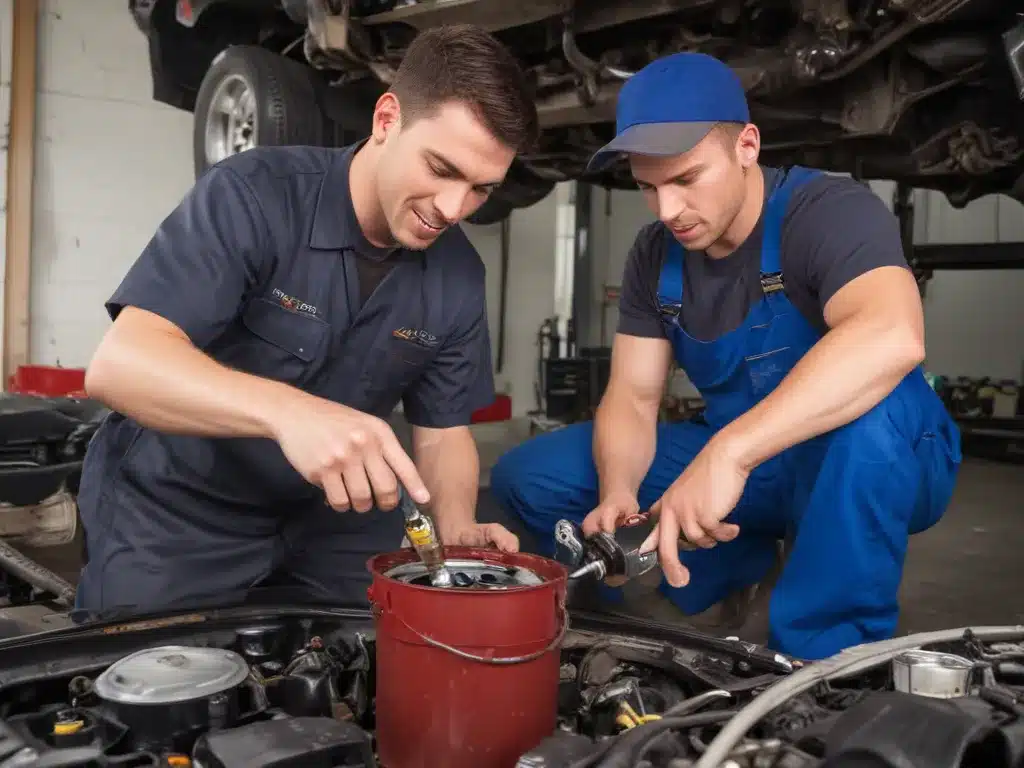
The Oil Change Dilemma: Striking the Right Balance
I’ll admit it – I used to be one of those people who religiously changed my car’s oil every 3,000 miles, no exceptions. It was a point of pride, like clockwork maintenance that showed I really cared about my vehicle. But over time, I’ve come to realize that this hard-and-fast rule isn’t always the best approach. In fact, it may be causing more harm than good in certain situations.
You see, the traditional 3,000-mile oil change interval is a bit of a myth. It’s a vestige from the old days of thicker, lower-quality oils that broke down faster. Nowadays, with the advanced synthetic blends and high-tech engineering in modern engines, many cars can safely go much longer between changes – sometimes up to 10,000 miles or more!
So why do we still cling to that 3,000-mile rule? Partly, it’s good old-fashioned human psychology. We love rules, schedules, and rituals. It makes us feel in control. But the truth is, rigidly sticking to that interval is often a wasteful and unnecessary practice. It’s time we rethink our oil change habits to save money, resources, and the environment.
The Evolving Science of Oil Changes
Okay, let’s dive a little deeper into the science behind oil changes. The main purpose of engine oil is to lubricate all the moving parts inside your car’s motor, reducing friction and wear. Over time, the oil breaks down and becomes less effective at its job. This is where the need for regular oil changes comes in.
But how often is “often enough”? Well, it depends on a few key factors:
– The type of oil used (conventional, synthetic blend, or full synthetic)
– The age and mileage of your vehicle
– Your driving conditions and habits (lots of stop-and-go city driving vs. highway miles, towing, etc.)
– Recommendations from your car’s manufacturer
Conventional oils tend to degrade faster, so they’ll need changing more frequently – maybe around that 3,000-mile mark. Synthetic oils, on the other hand, can often go twice as long or more before needing replacement. And if you have a newer, well-maintained vehicle that spends most of its time on the highway, you may be able to safely stretch oil changes out to 7,500 miles or even 10,000 miles.
The key is to strike the right balance. Don’t just blindly follow the 3,000-mile rule – check your owner’s manual and pay attention to how your car is performing. With a little trial and error, you can likely find the sweet spot that keeps your engine protected without being overly cautious.
Putting the Environment First
Okay, so we’ve established that more frequent oil changes aren’t always necessary. But why does that matter from an environmental standpoint? Well, it all comes down to waste reduction.
Think about it – if every driver changed their oil every 3,000 miles, even when their car could go longer, that’s a lot of unnecessary oil being drained and disposed of. And used motor oil is considered a hazardous waste that can contaminate soil and waterways if not handled properly.
By extending your oil change intervals, you’re directly cutting down on the amount of waste produced. And that’s not just good for the planet – it can also save you money in the long run. Fewer oil changes mean fewer trips to the mechanic and less money spent on the service.
Of course, you still need to be responsible about properly disposing of the used oil when the time does come. Many auto parts stores, service centers, and even some municipal recycling programs will accept used motor oil for proper disposal or recycling. It’s a simple step we can all take to reduce our environmental impact.
The Role of Maintenance Monitoring
So if we’re not sticking to that 3,000-mile rule, how do we know when to actually change the oil? This is where a bit of proactive maintenance monitoring comes in handy.
I like to think of it as “getting to know your car” – paying attention to how it’s performing, listening for any unusual noises or changes, and keeping an eye on that oil life indicator on the dashboard. Some vehicles even have sophisticated oil life monitoring systems that can give you a pretty accurate estimate of when an oil change is truly needed.
Beyond that, it’s also helpful to do a quick visual inspection of the oil itself from time to time. Look for signs that it’s darkening, thickening, or just generally not looking as fresh and clean as when you first poured it in. That can be a good indicator that it’s time for a change, even if your mileage hasn’t quite reached the recommended interval.
And don’t be afraid to consult your owner’s manual or talk to your trusted mechanic. They can offer guidance on the ideal oil change schedule for your specific make, model, and driving conditions. It may take a little trial and error, but you’ll eventually find that sweet spot that keeps your engine happy without generating unnecessary waste.
The Bottom Line: Savings & Sustainability
At the end of the day, extending your oil change intervals is really a win-win situation. You save money on the service, reduce your environmental impact, and keep your car running smoothly. It’s a small change that can make a big difference, both for your wallet and the planet.
So the next time you’re tempted to rush in for that 3,000-mile oil change, take a step back and really evaluate your car’s needs. Chances are, you can safely go a little longer – and feel good about it too. It’s all about finding that perfect balance between maintenance and mindfulness.
Who knows, you might even have a few extra bucks in your pocket to treat yourself to a car wash or detailing session. That’s what I call a successful oil change experience!


